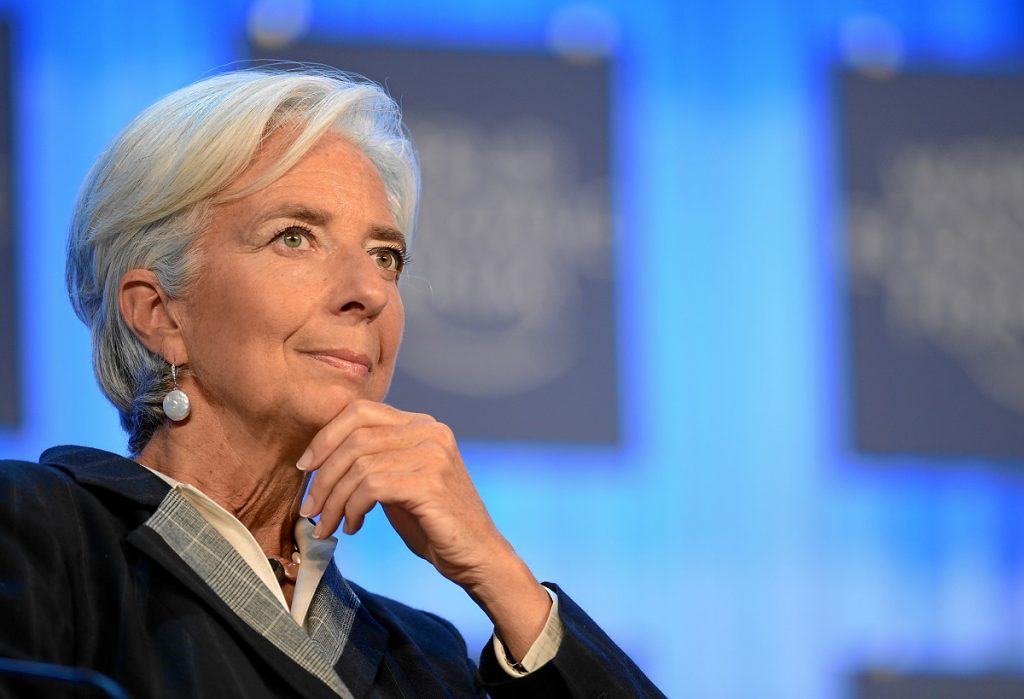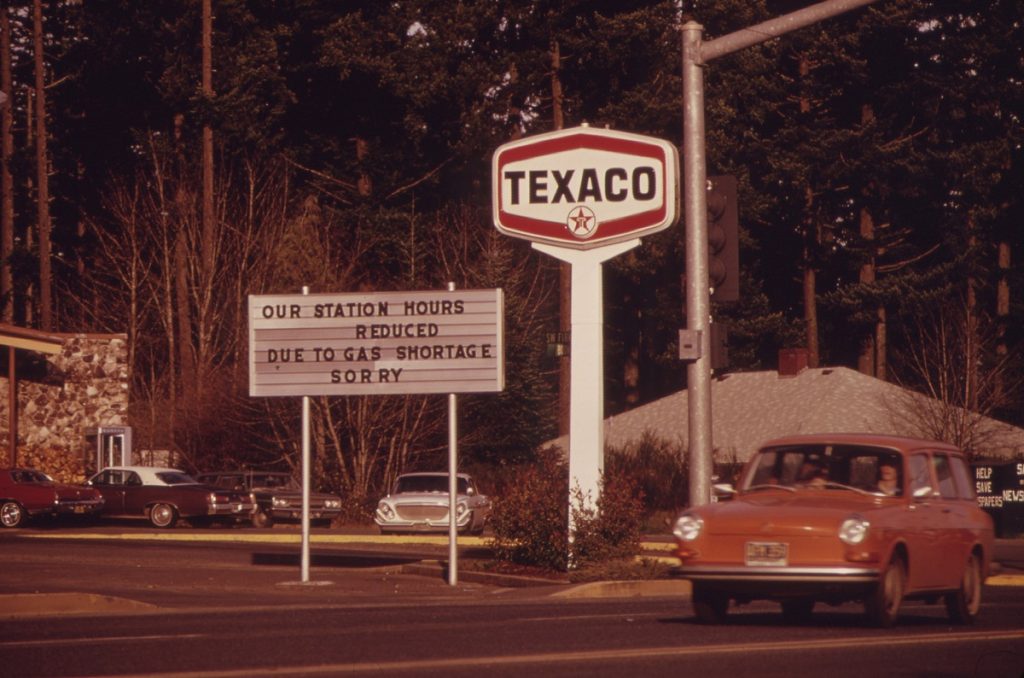
We forget songs, loves and trips. Maybe, because they did...

The Earth from space, those other corners of the universe,...

After 137 years of history, the Catalan company of pyrotechnics...

Find out which are the 26 restaurants with Michelin Star...

The printed book is a technological device dating back to...

The direct relationship between intelligence and success applies to any...

The festival redoubles its commitment to offering a wide variety...

Then, Agbar becomes the first large corporation that restores its...

Apparently, what we thought was science fiction is beginning to...

The hospital's managing director, Manel del Castillo, and the pharmaceutical...

Música clásica sobre la arena de la playa en dos...

The first session of the cycle on the regatta organized...

The hospital's managing director, Manel del Castillo, and the pharmaceutical...

Generalitat y Ayuntamiento impulsarán dos equipamientos de 'Casa de les...

Leticia Beleta, director of Alexion Pharmaceuticals in Spain and Portugal,...

We all have a friend who never leaves the Gràcia...

Barcelona director opts for Best International Film with 'La sociedad...

The hotel and industrial sectors softened the market's decline last...

The technology company, with a workforce of 35 employees and...

“The women of yesteryear were strong and had to fight...
[dropcap letter=”T”]
he middle class was not a recurring theme in the international public debate until the sheer size of the financial and economic collapse sparked by the Lehman Brothers bankruptcy was grasped. Since then, a growing number of experts have been paying attention to it. And quite a few of them have decided to shout out to the four winds that the middle class is dead, or that it’s about to die. Some don’t go quite so far, although they do cite a litany of countless problems that the middle class is facing. Christine Lagarde has frequently warned about the profound “crisis of the middle classes in advanced economies” and the need to find solutions to dampen its effects. As the director of the International Monetary Fund, just a few months ago she claimed that the disenchantment with the future, the job shortage, scant growth in the economies involved, rising inequality and the lack of transparency had fuelled the decline of the middle class.

THE MIDDLE CLASS AND THE 2008 RECESSION. A report issued by the Pew Research Center think tank noted that in some European countries, such as Spain, Germany and Finland, the middle class had been hurt the worst by the economic recession. According to this study, the Spanish middle class, which had accounted for almost 70% of households at the beginning of the 1990s, had dropped seven percentage points by 2013. And even these calculations may be too high. A monograph by the Fundación BBVA and the Instituto Valenciano de Investigaciones Económicas stated that 52% of the Spanish population is middle class. According to this study, more than three million Spaniards had been displaced from the middle area of income distribution. However, the phenomenon also stretches beyond Europe’s borders. The US middle class has been heavily affected, and this is one of the key factors in the public debate in the United States. In fact, the Obama administration was forced to create a working group, in which several federal agencies participated, to respond to the problems facing the middle class. The outcomes were not as expected, and currently President Trump is promising huge tax cuts which would alleviate the situation of the middle class.
AMBIGUOUS DEFINITION. So what are we talking about when we say middle class? Perhaps we should begin by using the plural, as is common in French, because of the extreme diversity of this social group. Indeed, despite the hundreds of definitions proposed by sociologists, economists and historians, we have not yet properly captured the concept. Therefore, the target is fragile and complex. What do the middle classes have in common? Some people prioritise income, others consumption, and yet others concentrate on the features of a sociocultural identity. They are probably all right because these dimensions are interrelated and inextricable. Ultimately, the majority of experts choose the easy yet ambivalent definition: the middle class is the class between the upper and lower classes.
In Spain, the middle class is considered to be comprised of successful professionals, including civil servants, small business owners and workers with steady contracts in factories. In fact, “we’re all the middle class” became a popular adage, although it’s on the outs today. The same holds true if you examine the rest of the Eurozone. Thus, a strong identity is favoured, but one that is generic and fragile, and it is impossible to find a common denominator. Some authors like Branko Milanovic believe that we cannot speak of a global middle class given the strong regional and national variations. Indeed, without leaving Europe, the salary differential among the members of this group is up to 30,000 euros in mean income. If we stress income alone, we will fall into an overly mechanical, diffuse definition. This phenomenon is nothing new. Throughout the 19th century, when there was still talk of a petty bourgeoisie, artisans were a paradigmatic example. Because of their ability to rise socially and own property, they should have fit into the middle class, which in Spain at the time only accounted for a paltry 5% of the population, comprised of civil servants, teachers, doctors, engineers and landlords. However, artisans did not want to join the club because what turns people into middle class is their desire to be middle class. The middle classes exist as a group at a level of representation that believes it shares a way of seeing the world and interpreting reality, even though we know that the diversity of this group makes it impossible to objectively pinpoint what those values, attitudes and lifestyles are. Therefore, self-identification is the key to interpreting middle class, even if it is nonetheless a somewhat liquid definition.
ACCOMPLISHMENTS OF THE MIDDLE CLASS. The world as we know it today is a consequence of the rise of the middle classes, a phenomenon which disproved Karl Marx’s dreams about their early disappearance. As the historian Jürgen Kocka pointed out, the middle class wrested control of bourgeois culture and was thus able to champion the struggle for these ideals. What at one time were merely privileges only available to the elites – such as the right to vote, education or consumption – became universal, especially during the golden age of the middle class, known as the thirty glorious years. For this reason, Massimo Gaggi and Edoardo Narduzzi have claimed that the end of the middle class would be the coup de grâce of the social and political stability that it represents.
After the devastating effects of World War II, the middle classes constructed the demoliberal consensus of the post-war period until the oil crisis. The context was favourable as a result of demographic growth and the policies of the Welfare State, with the development of pensions, unemployment insurance and public healthcare and education. The majority of workers became homeowners in that era, and they were able to take trips on their vacations and, most importantly, consume. In the words of Tony Judt, the Welfare State created the middle class, which would be its main beneficiaries and defenders. But the crisis in the 70s proved to be a heavy blow, and a long reversal got underway.

In Spain, the process was different because of the country’s particular sociopolitical context. The first impetus to strengthen a broad middle class was Franco-era developmentalism, so it trailed behind the transformations that had been launched decades earlier in neighbouring countries. The advent of democracy truly drove the construction of the Spanish Welfare State, while the emerging middle class looked at itself in the European mirror. By the time this consolidation took place, the first serious problems in the system were already beginning to be felt in the rest of the continent. Therefore, it is not difficult to link the fragility of the Spanish middle class today with the limitations of this late development.
Despite the doomsayers, may experts believe that the future will be for the middle classes or it will not be. One of the leading authorities in this field, the economist Homi Kharas, has calculated that currently around 42% of the world population could be described as middle class. In global terms, we are talking about 3.2 billion people. However, its growth has not plateaued. To the contrary, always according to Kharas’ predictions, it will reach over 50% of the world population in the forthcoming years. The main reasons for this advance will be the growth of the middle classes in developing countries, which will be global. In fact, while the annual growth rate in European countries stands at a paltry 0.5%, in places like China and India it is growing at 6%. There is no doubt that this new middle class will become an extraordinarily influential agent of social change in the upcoming decades.
UNCERTAINTIES OF THE MIDDLE CLASS. Other scholars are not as optimistic. In Average is Over (2013), Tyler Cowen believes that we are heading towards a social and economic impoverishment because of the impact of technology. Cowen calculates that 10-20% of households will live comfortably and around 80% will have to fight for their subsistence. From this vantage point, it seems that the digital revolution underway today will be devastating for the interests of the middle class. Even though there is no consensus, some authors cite the destruction of 50% of jobs in the short and middle term as the result of the development of disruptive technology. Once again, the middle class seems to be in the bullseye as the main player in the crisis. Techno-pessimism has many weapons in its favour, but it ignores other core factors like the existence of job regulations, which will help alleviate the negative effects that come with this crisis.
Still, it is too rash to foretell the death of the middle class. It will not die, but it will have to transform itself in order to rise to the challenges posed by the globalised world. In the opinion of Moisés Naím, one of the main conflicts in the future will be played out in the arena of frustrated expectations, both of the middle classes which are waning in the wealthy countries and those that are growing in the poorer ones. The middle class in Europe is not going to disappear. In fact, it has withstood the recession much better than the lower classes, which have been the main victims of this economic lassitude. However, the middle class will definitely have to resolve its current identity crisis. The dreams of yesteryear have been shown to be chimerical, so the optimism of the golden years has become a shared sense of vulnerability and mistrust. The question is how to channel these problems through reform-oriented programmes that improve the health of our political institutions, help attenuate social inequalities and respond to the main concerns of middle classes, which until now have always been the guarantee of democratic stability when faced with risk of polarisation.
[dropcap letter=”T”]
he middle class was not a recurring theme in the international public debate until the sheer size of the financial and economic collapse sparked by the Lehman Brothers bankruptcy was grasped. Since then, a growing number of experts have been paying attention to it. And quite a few of them have decided to shout out to the four winds that the middle class is dead, or that it’s about to die. Some don’t go quite so far, although they do cite a litany of countless problems that the middle class is facing. Christine Lagarde has frequently warned about the profound “crisis of the middle classes in advanced economies” and the need to find solutions to dampen its effects. As the director of the International Monetary Fund, just a few months ago she claimed that the disenchantment with the future, the job shortage, scant growth in the economies involved, rising inequality and the lack of transparency had fuelled the decline of the middle class.

THE MIDDLE CLASS AND THE 2008 RECESSION. A report issued by the Pew Research Center think tank noted that in some European countries, such as Spain, Germany and Finland, the middle class had been hurt the worst by the economic recession. According to this study, the Spanish middle class, which had accounted for almost 70% of households at the beginning of the 1990s, had dropped seven percentage points by 2013. And even these calculations may be too high. A monograph by the Fundación BBVA and the Instituto Valenciano de Investigaciones Económicas stated that 52% of the Spanish population is middle class. According to this study, more than three million Spaniards had been displaced from the middle area of income distribution. However, the phenomenon also stretches beyond Europe’s borders. The US middle class has been heavily affected, and this is one of the key factors in the public debate in the United States. In fact, the Obama administration was forced to create a working group, in which several federal agencies participated, to respond to the problems facing the middle class. The outcomes were not as expected, and currently President Trump is promising huge tax cuts which would alleviate the situation of the middle class.
AMBIGUOUS DEFINITION. So what are we talking about when we say middle class? Perhaps we should begin by using the plural, as is common in French, because of the extreme diversity of this social group. Indeed, despite the hundreds of definitions proposed by sociologists, economists and historians, we have not yet properly captured the concept. Therefore, the target is fragile and complex. What do the middle classes have in common? Some people prioritise income, others consumption, and yet others concentrate on the features of a sociocultural identity. They are probably all right because these dimensions are interrelated and inextricable. Ultimately, the majority of experts choose the easy yet ambivalent definition: the middle class is the class between the upper and lower classes.
In Spain, the middle class is considered to be comprised of successful professionals, including civil servants, small business owners and workers with steady contracts in factories. In fact, “we’re all the middle class” became a popular adage, although it’s on the outs today. The same holds true if you examine the rest of the Eurozone. Thus, a strong identity is favoured, but one that is generic and fragile, and it is impossible to find a common denominator. Some authors like Branko Milanovic believe that we cannot speak of a global middle class given the strong regional and national variations. Indeed, without leaving Europe, the salary differential among the members of this group is up to 30,000 euros in mean income. If we stress income alone, we will fall into an overly mechanical, diffuse definition. This phenomenon is nothing new. Throughout the 19th century, when there was still talk of a petty bourgeoisie, artisans were a paradigmatic example. Because of their ability to rise socially and own property, they should have fit into the middle class, which in Spain at the time only accounted for a paltry 5% of the population, comprised of civil servants, teachers, doctors, engineers and landlords. However, artisans did not want to join the club because what turns people into middle class is their desire to be middle class. The middle classes exist as a group at a level of representation that believes it shares a way of seeing the world and interpreting reality, even though we know that the diversity of this group makes it impossible to objectively pinpoint what those values, attitudes and lifestyles are. Therefore, self-identification is the key to interpreting middle class, even if it is nonetheless a somewhat liquid definition.
ACCOMPLISHMENTS OF THE MIDDLE CLASS. The world as we know it today is a consequence of the rise of the middle classes, a phenomenon which disproved Karl Marx’s dreams about their early disappearance. As the historian Jürgen Kocka pointed out, the middle class wrested control of bourgeois culture and was thus able to champion the struggle for these ideals. What at one time were merely privileges only available to the elites – such as the right to vote, education or consumption – became universal, especially during the golden age of the middle class, known as the thirty glorious years. For this reason, Massimo Gaggi and Edoardo Narduzzi have claimed that the end of the middle class would be the coup de grâce of the social and political stability that it represents.
After the devastating effects of World War II, the middle classes constructed the demoliberal consensus of the post-war period until the oil crisis. The context was favourable as a result of demographic growth and the policies of the Welfare State, with the development of pensions, unemployment insurance and public healthcare and education. The majority of workers became homeowners in that era, and they were able to take trips on their vacations and, most importantly, consume. In the words of Tony Judt, the Welfare State created the middle class, which would be its main beneficiaries and defenders. But the crisis in the 70s proved to be a heavy blow, and a long reversal got underway.

In Spain, the process was different because of the country’s particular sociopolitical context. The first impetus to strengthen a broad middle class was Franco-era developmentalism, so it trailed behind the transformations that had been launched decades earlier in neighbouring countries. The advent of democracy truly drove the construction of the Spanish Welfare State, while the emerging middle class looked at itself in the European mirror. By the time this consolidation took place, the first serious problems in the system were already beginning to be felt in the rest of the continent. Therefore, it is not difficult to link the fragility of the Spanish middle class today with the limitations of this late development.
Despite the doomsayers, may experts believe that the future will be for the middle classes or it will not be. One of the leading authorities in this field, the economist Homi Kharas, has calculated that currently around 42% of the world population could be described as middle class. In global terms, we are talking about 3.2 billion people. However, its growth has not plateaued. To the contrary, always according to Kharas’ predictions, it will reach over 50% of the world population in the forthcoming years. The main reasons for this advance will be the growth of the middle classes in developing countries, which will be global. In fact, while the annual growth rate in European countries stands at a paltry 0.5%, in places like China and India it is growing at 6%. There is no doubt that this new middle class will become an extraordinarily influential agent of social change in the upcoming decades.
UNCERTAINTIES OF THE MIDDLE CLASS. Other scholars are not as optimistic. In Average is Over (2013), Tyler Cowen believes that we are heading towards a social and economic impoverishment because of the impact of technology. Cowen calculates that 10-20% of households will live comfortably and around 80% will have to fight for their subsistence. From this vantage point, it seems that the digital revolution underway today will be devastating for the interests of the middle class. Even though there is no consensus, some authors cite the destruction of 50% of jobs in the short and middle term as the result of the development of disruptive technology. Once again, the middle class seems to be in the bullseye as the main player in the crisis. Techno-pessimism has many weapons in its favour, but it ignores other core factors like the existence of job regulations, which will help alleviate the negative effects that come with this crisis.
Still, it is too rash to foretell the death of the middle class. It will not die, but it will have to transform itself in order to rise to the challenges posed by the globalised world. In the opinion of Moisés Naím, one of the main conflicts in the future will be played out in the arena of frustrated expectations, both of the middle classes which are waning in the wealthy countries and those that are growing in the poorer ones. The middle class in Europe is not going to disappear. In fact, it has withstood the recession much better than the lower classes, which have been the main victims of this economic lassitude. However, the middle class will definitely have to resolve its current identity crisis. The dreams of yesteryear have been shown to be chimerical, so the optimism of the golden years has become a shared sense of vulnerability and mistrust. The question is how to channel these problems through reform-oriented programmes that improve the health of our political institutions, help attenuate social inequalities and respond to the main concerns of middle classes, which until now have always been the guarantee of democratic stability when faced with risk of polarisation.
